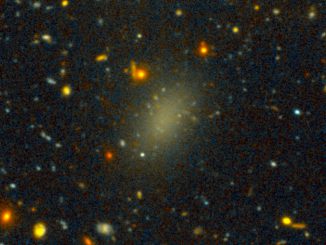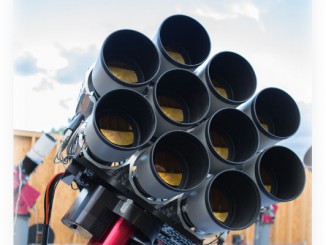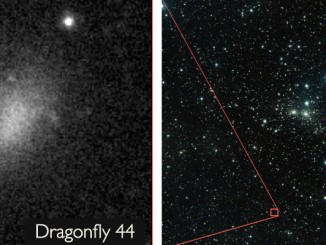
Massive galaxy discovered made almost entirely of dark matter
An international team of astronomers has discovered a massive galaxy that consists of 99.99 percent dark matter. Even though it is relatively nearby, astronomers had missed the galaxy, named Dragonfly 44, for decades because it is very dim. The galaxy lies about 300 million light-years away in the constellation Coma.


